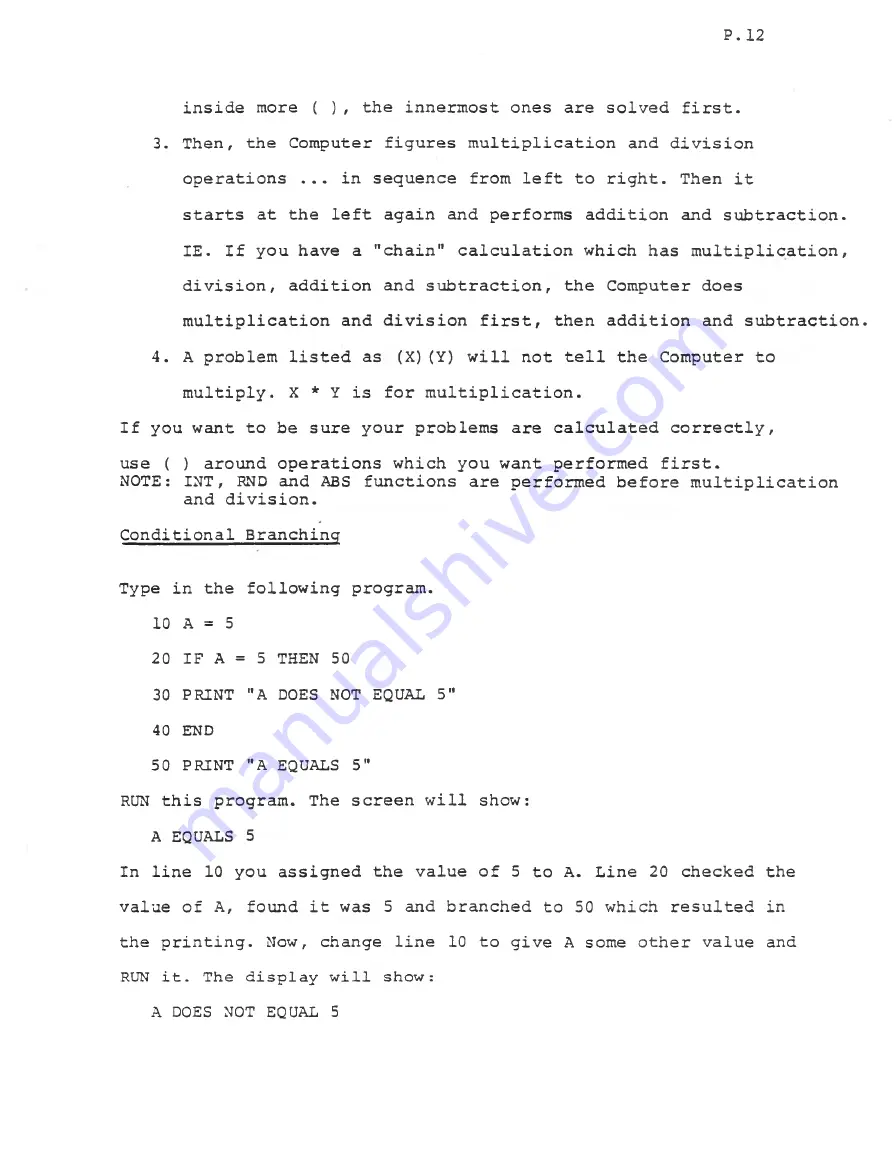
P.12
inside more ( ), the innermost ones are solved first.
3. Then, the Computer figures multiplication and division
operations ... in sequence from left to right. Then it
starts at the left again and performs addition and subtraction.
IE. If you have a "chain" calculation which has multiplication,
division, addition and subtraction, the Computer does
multiplication and division first, then addition and subtraction.
4. A problem listed as (X)(Y) will not tell the Computer to
multiply. X * Y is for multiplication.
If you want to be sure your problems are calculated correctly,
use ( ) around operations which you want performed first.
NOTE: I N T , RND and ABS functions are performed before multiplication
and division.
Conditional Branching
Type in the following program.
10 A = 5
20 IF A = 5 THEN 50
30 PRINT "A DOES NOT EQUAL 5"
40 END
50 PRINT "A EQUALS 5"
RUN this program. The screen will show:
A EQUALS 5
In line 10 you assigned the value of 5 to A. Line 20 checked the
value of A, found it was 5 and branched to 50 which resulted in
the printing. Now, change line 10 to give A some other value and
RUN it. The display will show:
A DOES NOT EQUAL 5



























